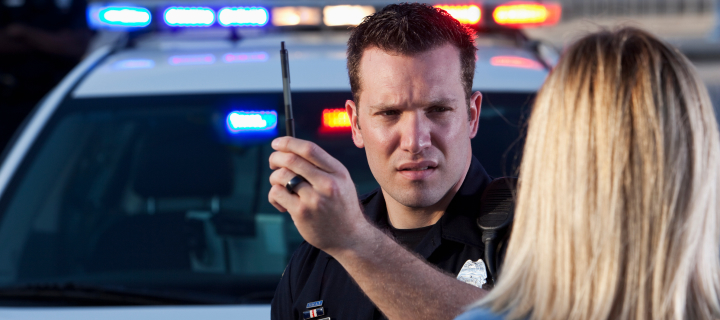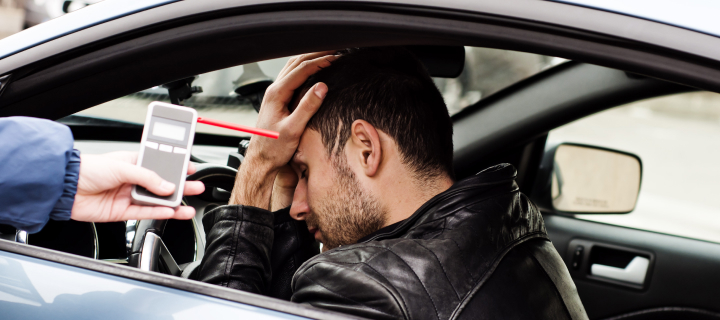SR-22 in California
No judgement – just low-cost options to get back on the road.
Are you now required to file an SR-22 with your state? Most states require drivers to file an SR-22 once they are considered to be “high-risk” drivers. Unfortunately, most drivers don’t know what the SR-22 is or how it works.
If you don’t know enough about this subject, you may end up spending way too much money on car insurance. Keep reading to discover what the SR-22 is, why it is required, and what the different related terms actually mean.
What Is the SR-22?
Part of what makes the SR-22 so confusing is the terminology surrounding it. For example, you may hear drivers or even state officials refer to “SR-22 insurance.”
However, SR-22 is not a separate type of insurance. Instead, it is a governmental form you may be required to file with your state. The state may require such a form if they have determined you are a high-risk driver.
This type of form sometimes goes by different names, including “SR-22 form” and “SR-22 bond.” In some cases, it is referred to as a Certificate of Financial Responsibility. That is because the form indicates to the state that you have obtained at least the minimum level of car insurance required by your state.
Why Would Someone Need an SR-22 in California?
At this point, you may be asking why the state of California would require someone to get an SR-22. The short answer is that this is mandatory when your state has decided you are a high-risk driver.
The most common reason why an SR-22 would be required is that you have had a DUI or DWI conviction. But it may also be necessary if you are caught driving without a license.
It can also be ordered if you fail to maintain the minimum insurance coverage required by your state. And in some cases, states can even require an SR-22 if you fail to make child support payments.
Finally, you may be required to file an SR-22 if you receive multiple traffic offenses within a certain period of time. This may be enough for the state to determine you are a risky driver.
How Long Do I Need to Have an SR-22 on File in California?
If you are required to file an SR-22 with your state, you probably have a simple question: How long are you required to keep this on file?

The exact answer will be determined in court. This means you may only be required to have it on file for a year or two. However, the SR-22 is most commonly required if a driver has been convicted of a DUI or DWI. In those cases, drivers usually must have an SR-22 on file for a minimum of three years. To keep it on file for that length of time, you may need to renew the SR-22 within the timeframe set by your local DMV.
The Importance of Regular Payments
One important thing to know is that you must make continuous insurance payments the entire time you have an SR-22 on file. If you miss payments and have your coverage dropped, then your SR-22 will be nullified. And you’ll be legally required to file the SR-22 once again, and you’ll be starting over again.
In addition to the hassle of the paperwork, the main reason you won’t want to start this process over again is that it can get very expensive for you.
Understanding the Costs of an SR-22 in California
One common question drivers have is whether the SR-22 is expensive or not. The answer is “yes and no.”
The actual SR-22 paperwork is not expensive at all. In fact, filing it with your state will likely cost no more than $50. But the added cost comes from your higher insurance premiums.
Remember, the SR-22 isn’t required unless the state thinks you are a high-risk driver. Insurance companies get nervous about insuring riskier drivers. This means you will have to find an insurance carrier willing to offer insurance to high-risk drivers.
Finding the Right Carrier
Many carriers will simply not offer this kind of insurance. And the carriers who do are going to charge you a higher premium. In other words, you are going to pay a much higher insurance premium the entire time you have the form on file. And your insurance carrier may make you pay for an annual policy in advance instead of one month at a time.
While we recommend that all drivers do this, those legally required to file an SR-22 should research multiple insurance carriers to see who can offer the most affordable price. Your premium will still be higher than it previously was, but taking the time to find the right carrier can make a major difference in how much you pay.
Can I Get an SR-22 Removed in California?
Once you start paying those higher premiums, you’ll probably be driven by a different question. Specifically, “How can I get an SR-22 removed?”

Unfortunately, there is no way to get the SR-22 removed before your time is up. So if you are required to keep the form on file for three years, there is nothing you can do (including demonstrating safe driving behavior) to get the form removed early.
Advocating for Yourself
And even when your time is up, keep in mind that the SR-22 is not going to go away on its own. You’ll need to contact your insurance carrier at the right time. In turn, your carrier will contact the DMV to have the form removed.
Keep in mind that your insurance premiums may still be a bit high even after you have the form removed. But these premiums should naturally lower on their own. Of course, you can accelerate this process by reaching out to multiple insurance carriers and getting different quotes until you find a price and coverage level you are comfortable with.
Does California Actually Require SR-22s?
Previously, we touched on the fact that most states require SR-22s. However, that means that not every state requires these forms. How, then, can you know if the form is required by your own state?
The following states do not require an SR-22:
- Delaware
- Kentucky
- Minnesota
- New Mexico
- New York
- North Carolina
- Oklahoma
- Pennsylvania
It’s possible that you may be required to file an SR-22 in one state, and then you move to one of the states above. However, you are still legally obligated to keep the SR-22 form on file in your original state (including making renewals as needed). Otherwise, you could potentially lose your license.
What Does “Non-Owner Operator” Mean With an SR-22?
In some cases, you may be required to file a Non-Owner Operator SR-22. And like the standard SR-22 form, there is a lot of confusion surrounding this topic.
For example, some people think a Non-Owner Operator SR-22 is its own kind of insurance. This is false: like the original SR-22, this is simply a form you may be required to file with the state rather than a separate kind of insurance.
But what does “non-owner operator” actually mean in this context? In short, it means you do not own a car. And at this point, you probably have a good question: Why would someone who doesn’t own a car be legally required to obtain car insurance and file an SR-22 with the state?
At this point, your state has determined that you have a history of high-risk driving behaviors. Moreover, they think that you are likely to get behind a wheel again (for example, if you were to borrow a friend’s car and drive around town).
Ready to Get a Quick Quote?
Other Key Information About Non-Owner Operator Status in California
Now, the good news is that if you are driving someone else’s car and get in an accident, their own insurance will be treated as the primary insurance. If there are remaining damages that need to be paid (for either property damage or personal injury), that would be paid out from your non-owner operator insurance.
Keep in mind that if you do end up purchasing a car, you will need to contact your insurance company right away. Most of the time, they can simply switch you over to an owner-operator policy or traditional car insurance. Failure to alert the insurance company to a car purchase means you could lose your car insurance, which means you’d have to get insurance again (likely through a different carrier) and begin the SR-22 process all over again.
If you need to get non-owner operator insurance, there are a few simple conditions you’ll need to meet. First, you need to have a driver’s license and not own a vehicle. Secondly, there are some insurance companies that will want to verify that nobody else in your household has a car and that you otherwise don’t have regular access to a vehicle.
The Right Way to Look at an SR-22
If you are required to file an SR-22, you are likely to feel anger and resentment. After all, this is going to involve a lot of paperwork, emails, and phone calls. And you are likely to pay thousands of dollars in extra premiums as a result of having the SR-22 on file for many years.
However, this is the wrong way to look at the SR-22 requirement. To be perfectly blunt, you should look at this requirement as a wake-up call. States do not casually require drivers to file this form. If they do so, it is because they have carefully examined your driving record and determined you pose a significant risk to yourself and others.
As annoying as it is to spend all that time and money on the SR-22, it’s best to look at the entire thing as a second chance for you to become a better and safer driver. For example, if you were convicted of a DUI or DWI, this is the perfect time to seek the help you may need.
Ultimately, the SR-22 is a lesson. And it’s an open secret that it is a fairly expensive lesson. Since you’re already (quite literally) paying for that lesson, it’s only fair that you learn and grow from this experience.
Getting Back On the Road After Getting a DUI in California
If you get a DUI in California, it may feel like your whole life is over. Eventually, though, you need to start asking practical questions. For example, how are you going to get to work from now on?
First, you’ll need to pay any fines and other penalties associated with the charge. Second, you’ll need to get the proper insurance coverage and have your insurance carrier file your SR-22 with the state.
Third, you need to get your license back. There are generally two ways to do this. The first is to apply for a restricted license. As the name implies, such a license can only be used to drive to certain locations (typically, your workplace as well as rehab or other court-appointed DUI education course).
If that sounds too restrictive, you may install an Ignition Interlock Device. It will require you to blow into a breathalyzer to start the car. With this installed, you may be able to more quickly restore your regular license and drive anywhere that you want to go.
Have an SR-22? Get a Custom Car Insurance Quote Today!
If you are required to file an SR-22, it’s more than just a legal requirement. This is pretty much the only way to get you back on the road while protecting you and your vehicle. Unfortunately, it can be challenging to find affordable insurance when you need to file an SR-22.
That’s where we come in. At Cost-U-Less, we offer different types of insurance at plans that are affordable and fair, even if you need an SR-22. Come get started with a quote , visit us at an office near you, or call us at 800-390-4071 for a quote.
